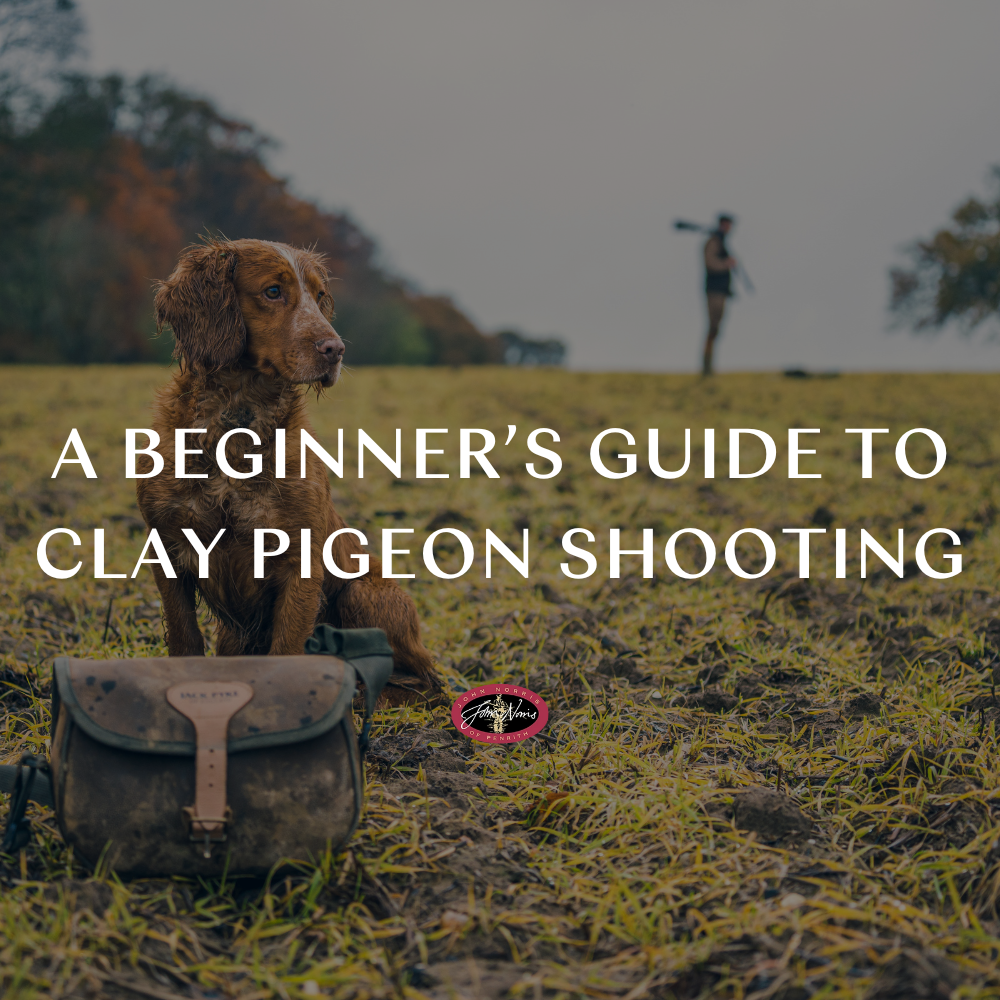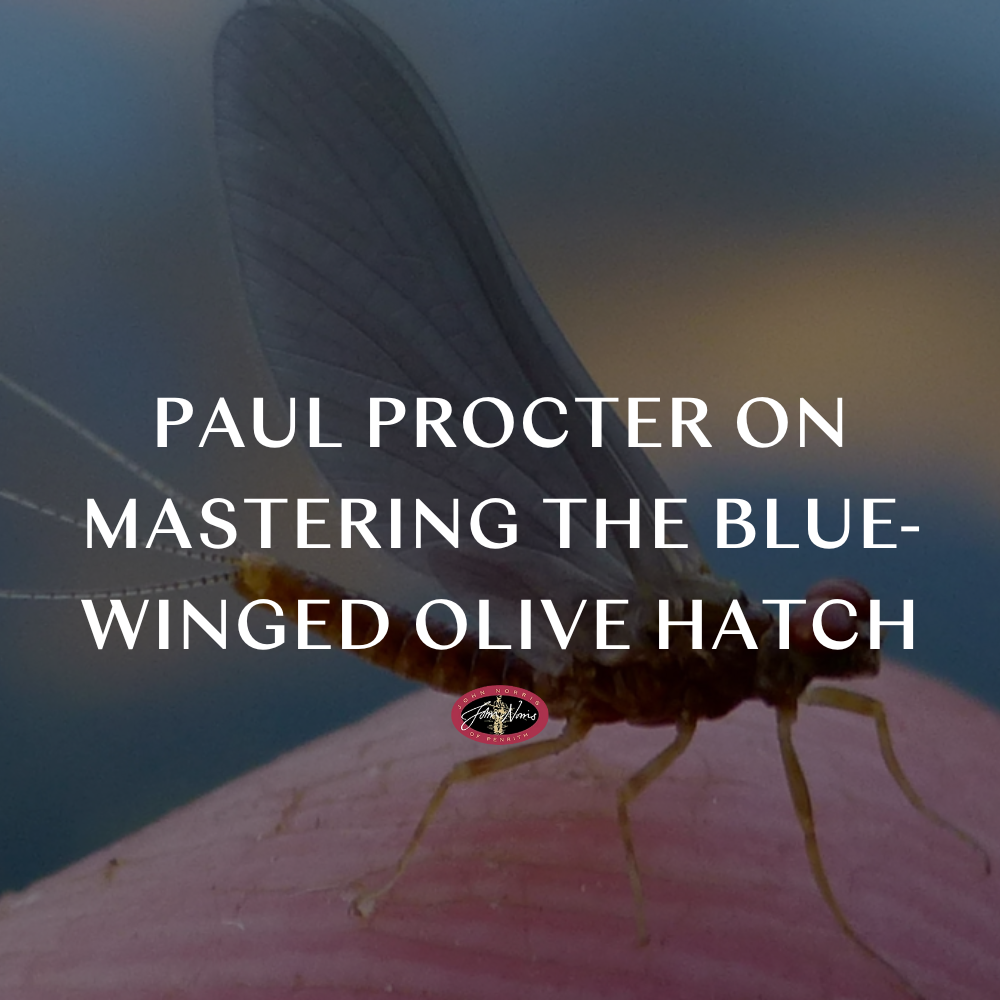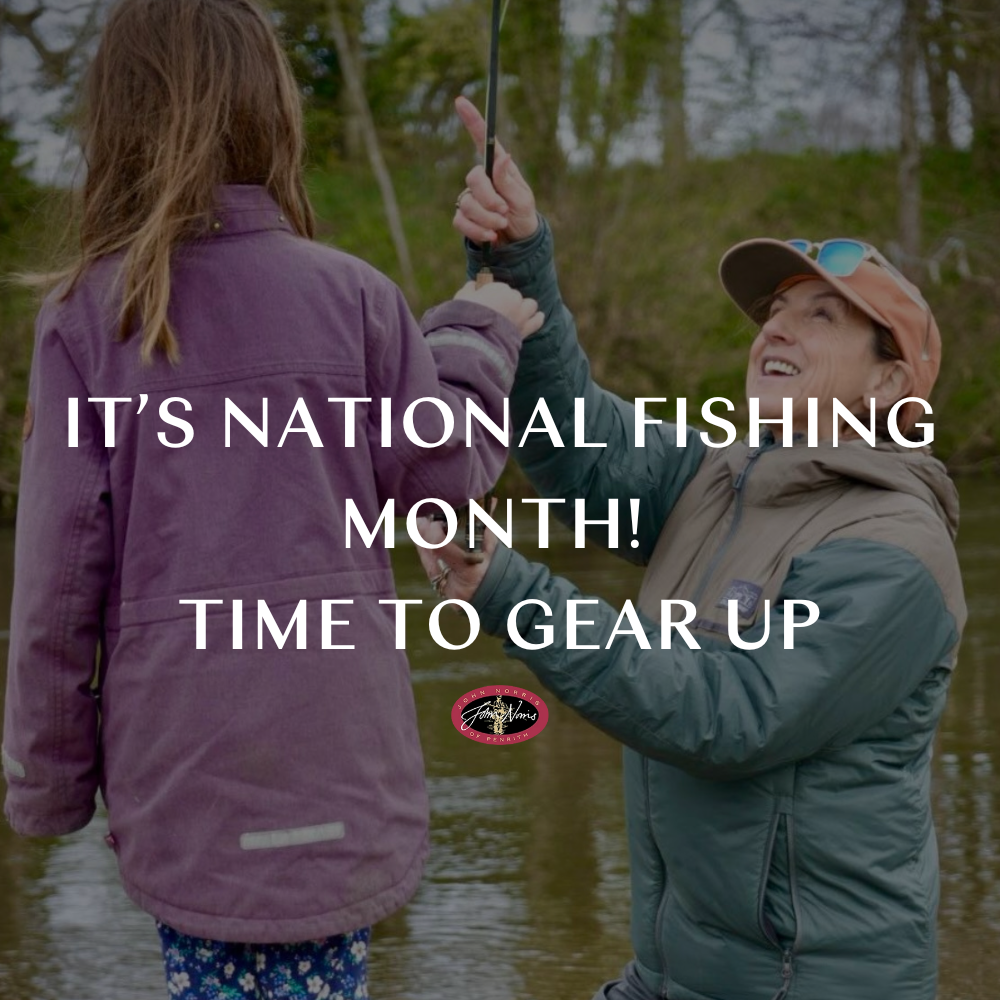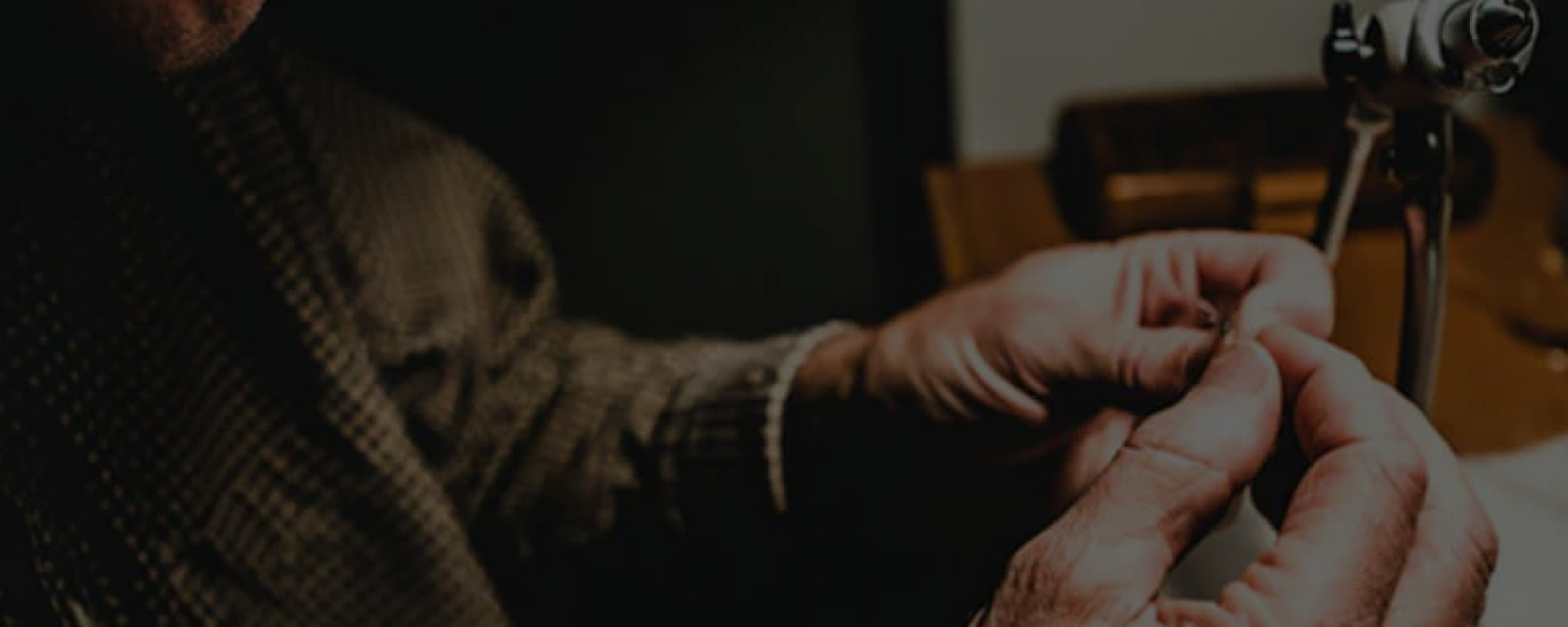Fishing in April: Top Tips
Here we are, already in April. The clocks have changed giving us more evening light, and the temperature is slightly warmer. The spring salmon season has had an exciting start, especially on the Tweed, Tay and Dee. Its been great to see lots of big fish being caught around the 18lb+ mark. If you haven’t already, this is the month to sort through your fishing tackle, fishing clothing and waders to make sure you have everything you need and all is in good order. The most productive time for fishing at this time of year is generally the central 5 hours, 10am – 4pm. Insects are more likely to hatch around this time due to it being the warmest part of the day. John Norris Pro Team veteran Julian Shaws shares his early season checklist and expert advice.
1. Safe Wading
After this winter’s storms and flooding, the substratum of many river beds will have changed - pools that you have always waded in safely may not be so now. The best way to check these changes it to visit the beat, especially in low water. Wear your chest waders and use your wading staff to safely check the depth of the water. Remember new gravel is unstable so be careful at all times. For extra peace of mind why not invest in one of the England life jackets? They are excellent value for money, very lightweight and available in automatic and manual inflation. Julian recommends: Simms Aluminium Folding Wading Staff in 51” or 56” - £99.00Guideline Folding Wading Staff - £59.99
Snowbee Telescopic Wading Staff - £28.99
Attach your wading staff to a Gear Keeper wading staff retractor, which will keep your wading staff out of the way until needed. It attaches to a jacket or vest D ring with snap clip. (£19.99)
Englands Survivor Braces life jackets – Manual £62.00 – Automatic £67.00
2. Check and sort your fly box.
Now is the time to sort through your fly boxes and see what flies are in need of replacing due to loss and general wear and tear. Alternatively, you may want to try some new patterns this season. We have a large selection of trout, salmon, sea-trout and many other flies, and our Pro Team can even advise you on what patterns to use where and how to fish them. John Norris Fly Range We also do a wide range of fly boxes in various shapes, sizes. John Norris Fly Box Range3. Check your waders.
If you didn’t wash your waders at the end of last season then give them a wash now; it aids in the breathability of the fabric and helps the waders perform better. It also ensures they are comfortable to wear – dirty waders can get stiff with grime. And, of course, it keeps them (and you) hygienic and smelling nice! Gore-tex and breathable waders should be washed at least twice a season. It’s also important to wash and dry your waders before any repairs are done.1. Machine Washing
When washing waders in a washing machine, there are some very important things to remember: • If possible, take off any loose parts such as shoulder straps or wading belts. Alternatively, fold them inside a zip lock bag to prevent them getting caught inside the machine. • Always use cold water with a cold rinse. • Never use powder – instead you should always use a non-bio liquid detergent. Grangers Wash-In Cleaner or Revivex High Tech Fabric Cleaner and Nikwax are a gentler option, specifically designed for waterproof wader fabric. • Do NOT use any fabric softener. • Hang the waders inside out and let them drip dry. If you want to store your waders, it is VERY IMPORTANT that they are completely dry. Folding up damp waders can cause mould to form, or cause the tape on the seams to loosen and fade.2. Hand Washing
You can also wash your waders by hand in a bath or a large sink. To do this, simply follow the steps below. • Dissolve washing solution in cool water and soak the waders. • If they are particularly dirty, just scrub them lightly with a soft brush. • Ensure you rinse the waders thoroughly. • Hang your waders up inside out and leave them to dry completely. • Remember to make sure they are COMPLETELY dry before putting them away (see above).RE-PROOFING
Should the waterproof coating on your waders start failing, don’t panic! There is a simple way to get your waders back to their old selves. Simply follow these easy steps: 1. Hang your waders up. 2. Spray on the Simms Revivex Water Repellent. There is no need to spray it on neoprene or rubber parts. 3. While waders are damp, use a hair dryer to activate the water repellent treatment, and help dry the waders. To check to see if you have any leaks, trap air in your waders and use the top of the waders rolled up to make an airtight seal, then pop in the bath and see if any bubbles show. The best way to repair leaks is with Aquasure. Simply apply a thin layer on the inside of the waders and leave to dry. It’s only £6.99 for a tube.Remember to check your laces, as they will far be outlived by the boots themselves! Spare sets can be purchased for just £7.99.
4. Fly Lines and Backing.
Check your fly lines for any damage, the best way to do this is to pull the full length of the line off your reel and check for any problems. Also try gently pulling your fly line to stretch it slightly - this will remove any memory from the fly line that it may have obtained from sitting on the reel for a while. When checking your line, you should also clean it. Julian recommends the Rio Wonder Cloth that has been impregnated with Agent X; each pack includes five wipes and they are easy to slide up and down your line. They’re also great for your fishing kit when reservoir fishing so you can clean you line easily during the day. Five wipes - £4.99This is also a great opportunity to check your backing to fly line knot and add a few drops of superglue. The easiest to use is the Zap A Gap brush-on glue, and its only £4.99.
Don’t forget to check the braided loops on your fly line to make sure they aren’t frayed. If they are replace them and if not add a drop of glue.
5. Tippet and Leaders.
Check your kit and see make sure you have enough tippet material and leaders and replace accordingly. Monofilament lasts a couple of seasons when it is at its best; with fluorocarbon it should last four years. Always write the purchase date on the back of your spools of nylon or fluorocarbon so you know how old it is. Julian recommends: Dry Fly Fishing Rio Powerflex down to 3.4lb - £4.50 for 30ydWet Fly Fishing with Droppers Fog Wet Fly Casts
Profil Casts only £2.49 – wet, dry and salmon.
Salmon Fishing Polyleaders are really popular and give you the ability to change your fishing depth with ease, as you only need to change the leader rather than the whole spool. It also works out much cheaper than having lots of different spools and lines. The Polyleaders Maxima is very popular - I would recommend 12lb – 15lb at the moment and then dropping off to 10lb when it warms up. Seaguar I personally prefer Seaguar as its denser so sinks quicker. It’s also much finer than monofilament and totally invisible.
6. Time to sharpen up
An essential piece of kit I always have in my fly vest is the Eze-Lap hook sharpener for £8.99. I can use it on the go and make sure my hooks are always as sharp as possible, so I’m not left telling tales of the one that got away!
7. Let’s get organised.
At the start of the season are you one of those people that has to try and locate your tackle as you can’t remember quite where you stored it?? I have a few simple tips to make life much easier. Do you know what line is on which reel? Always put a sticker on the back of your spool so you know its size and density. A great way to store reels and spools and to protect them is to put them in a reel brief. These are available for 5 or 10 reels/spools. Below are a few suggestions. Snowbee Reel Brief - £29.99 Holds 10 reels/spools.Simms Headwaters Reel Brief - £59.99 Features two large organiser panels, with six separate pockets that connect out of the way when not in use and made from mesh for easy viewing of contents.
Airflo Outlander Reel Cases – 5 reel or 10 reel from £14.99
8. Fly Vest
Store your fly boxes in the multiple pockets; pop your tippet material in another; clip on your tools with zingers; attach a floatant and sinkant holder and pop your net on the D ring on the back. With fly vests the options are endless, and you can even keep your favourite flies on your fly patch for easy access. Julian's recommends: The Simms Guide vest is outstanding in every way: design, quality, comfort. Its fits in everything you need perfectly, and I especially like the two storage pockets on the back.










